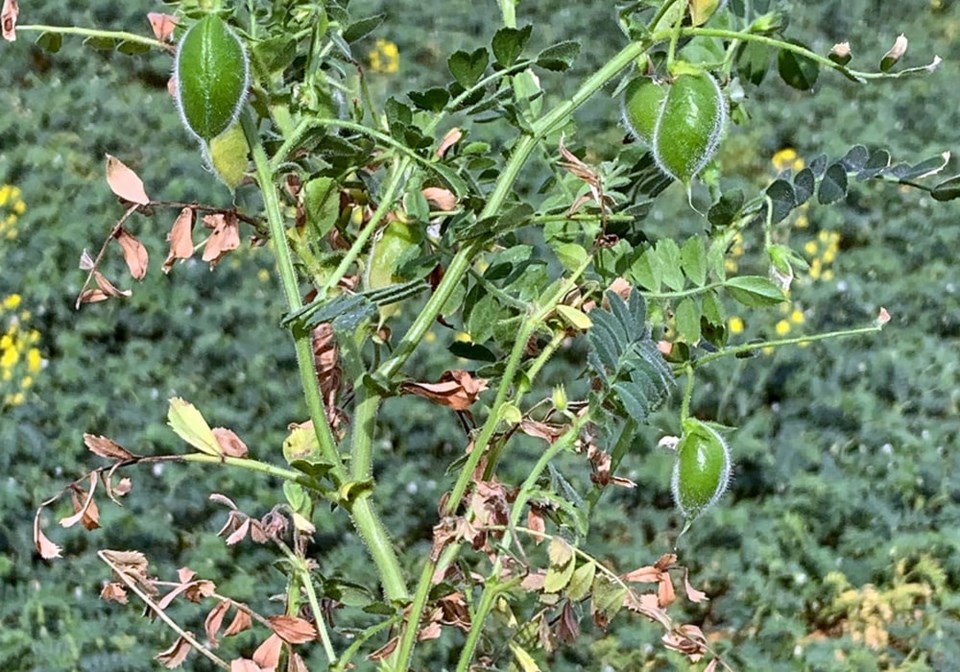WESTERN PRODUCER — Pulse and special crops growers and traders should get used to significant discrepancies between federal and provincial agencies when it comes to gauging the size of the Canadian crop, says an analyst.
The bulk of those crops are grown in Saskatchewan where the provincial government often seems at odds with Statistics Canada.
“It’s going to lead to larger amounts of uncertainty,” said MarketsFarm analyst Bruce Burnett.
For instance, the from Statistics Canada’s numbers for many of the province’s small-acre crops.
It should be noted that SCIC’s numbers naturally differ because not every farmer insures every crop.
However, the directional magnitude of change from the previous year’s acreage should be similar and many times it is not.
Statistics Canada estimates Saskatchewan farmers reduced pea acres by 12 percent, but according to the SCIC data it remained flat.
The federal government agency believes the province’s flax acres are down 13 percent, but SCIC says the decline was more than double that at 27 percent.
In some cases, the two agencies are even pointing in different directions.
Statistics Canada said Saskatchewan’s chickpea acres are down a whopping 34 percent, while SCIC data shows it is up three percent.
The feds have the province’s canaryseed acres dropping 11 percent, while SCIC says it climbed by two percent.
Burnett thinks some of the wide variance can be explained by a shift in Statistics Canada’s methodology.
The agency published its acreage estimates on June 28. The estimates were based on a survey of 25,000 farmers conducted between May 15 and June 12.
A final estimate will be released on Dec. 4.
“You would typically have had a resurvey of acreage by now,” said Burnett.
But that changed in 2017 when Statistics Canada reduced the number of surveys and switched to a more model-based approach to calculating production.
As a result, Burnett puts more faith in the SCIC data for assessing seeded acreage.
“That data is probably more complete because it’s a survey of 100 percent of the contract holders,” he said.
But there are also significant differences in yield estimates between the two levels of government.
Statistics Canada’s estimates for 2023 are generally more conservative than the province’s.
It forecasts the province’s pea yield at 27.2 bushels per acre and flax at 17.1. That compares to Saskatchewan Agriculture’s numbers of 30 and 19 bu. per acre.
Statistics Canada lentil yield is 931 pounds per acre and its chickpea forecast is 1,005 lb. per acre. The province’s estimate for those two crops is 1,058 and 1,071.
The feds are forecasting canaryseed and mustard yields of 1,050 and 634 lb. per acre, respectively. The province is at 1,052 and 599 for those two special crops.
Saskatchewan Agriculture’s numbers come from a survey of its provincial crop reporters, while Statistics Canada’s are based on satellite imagery and other data.
“I don’t know if there’s one that’s going to be more particularly accurate than the other,” said Burnett.
He doesn’t know why Statistics Canada’s estimates are generally lower because there should be no real bias in satellite-derived data.
But he does know that it is harder to pin down yield numbers for small-acreage crops.
Burnett expected the production uncertainty with pulses and special crops to linger into December and that will be the new reality in the future.
But it’s nothing new for seasoned traders.
“This grain merchandising business is full of uncertainty,” he said.
Contact [email protected]
SASKTODAY.ca is Saskatchewan's home page. Bookmark us at this link.




